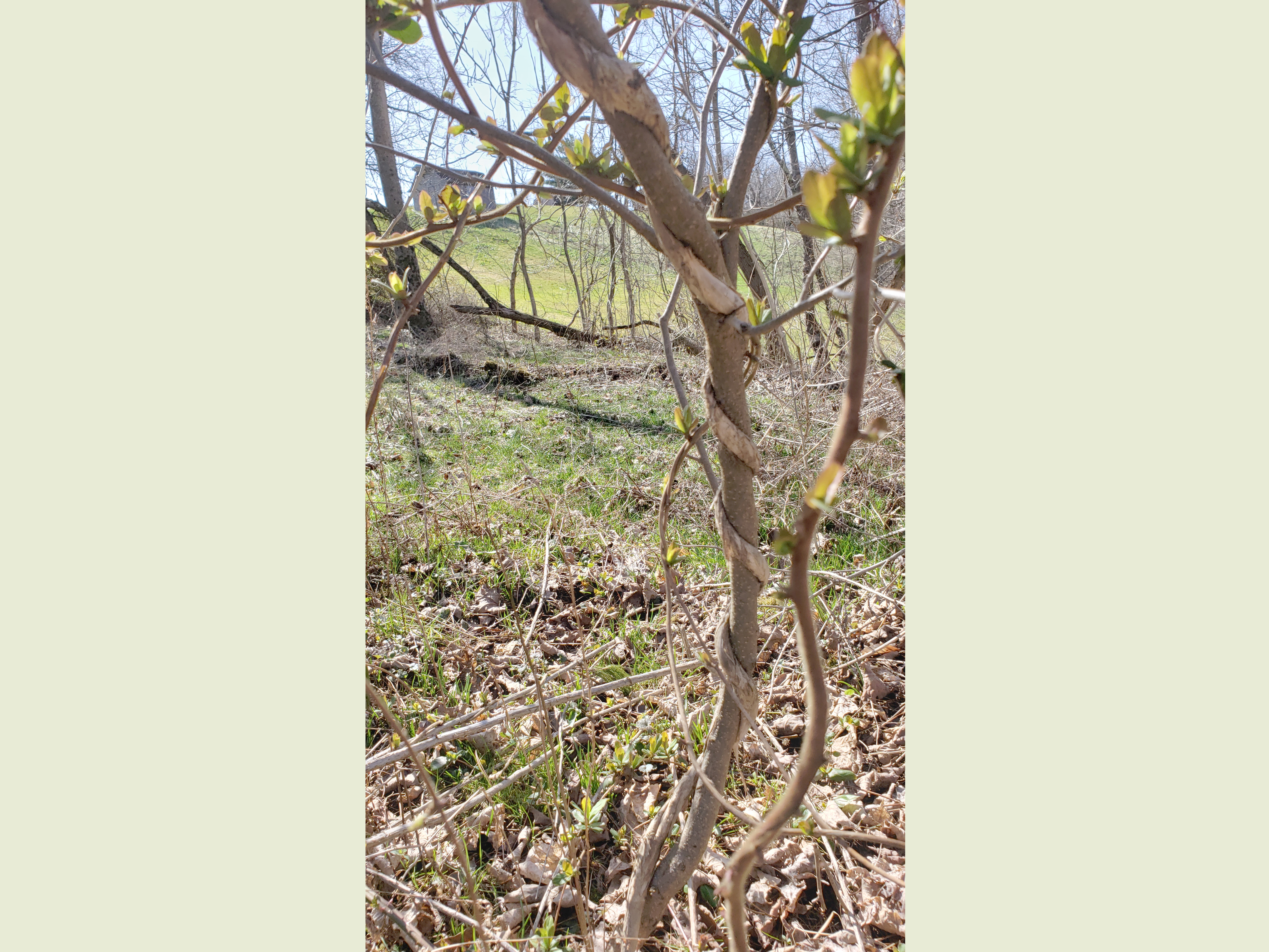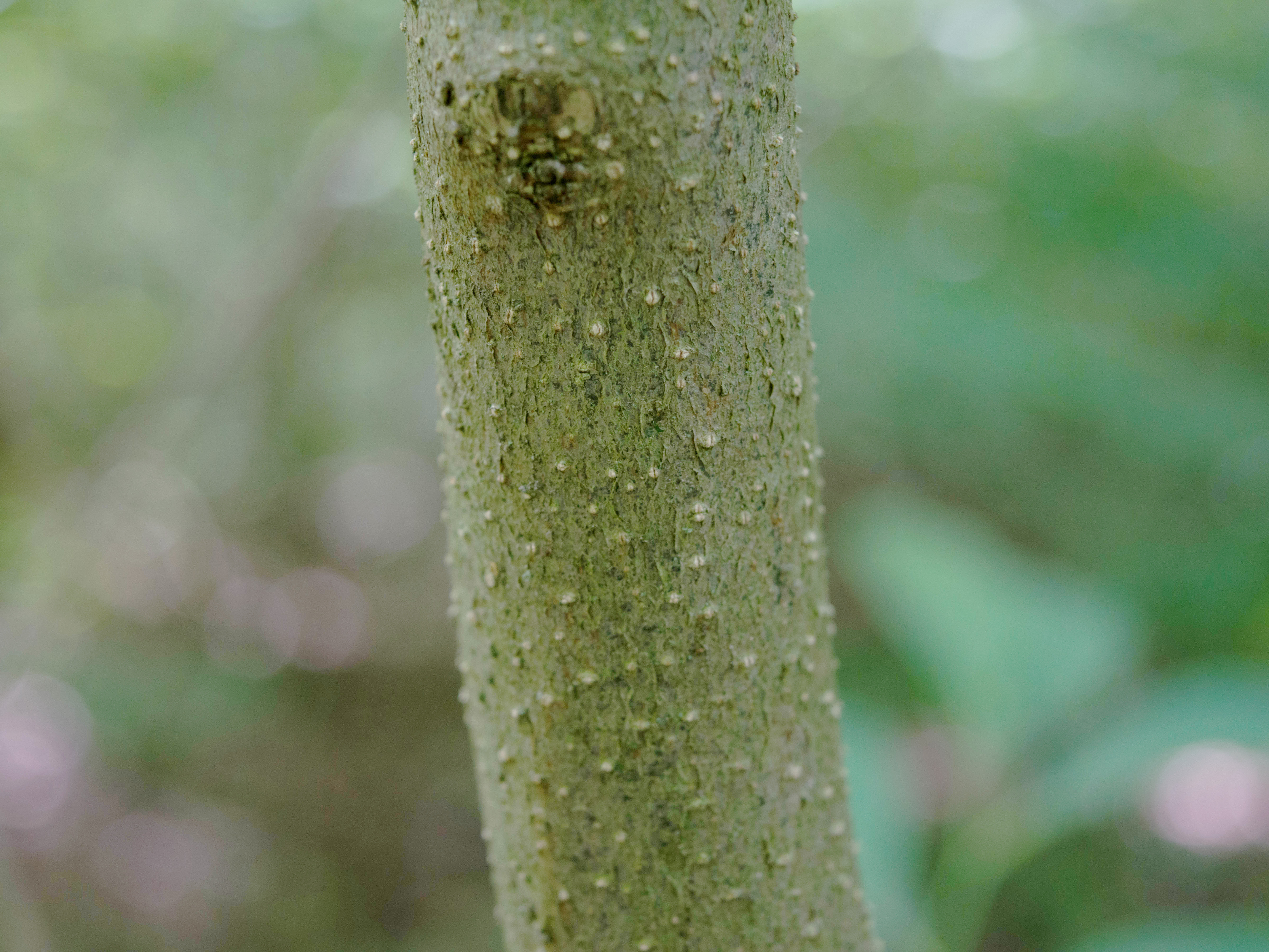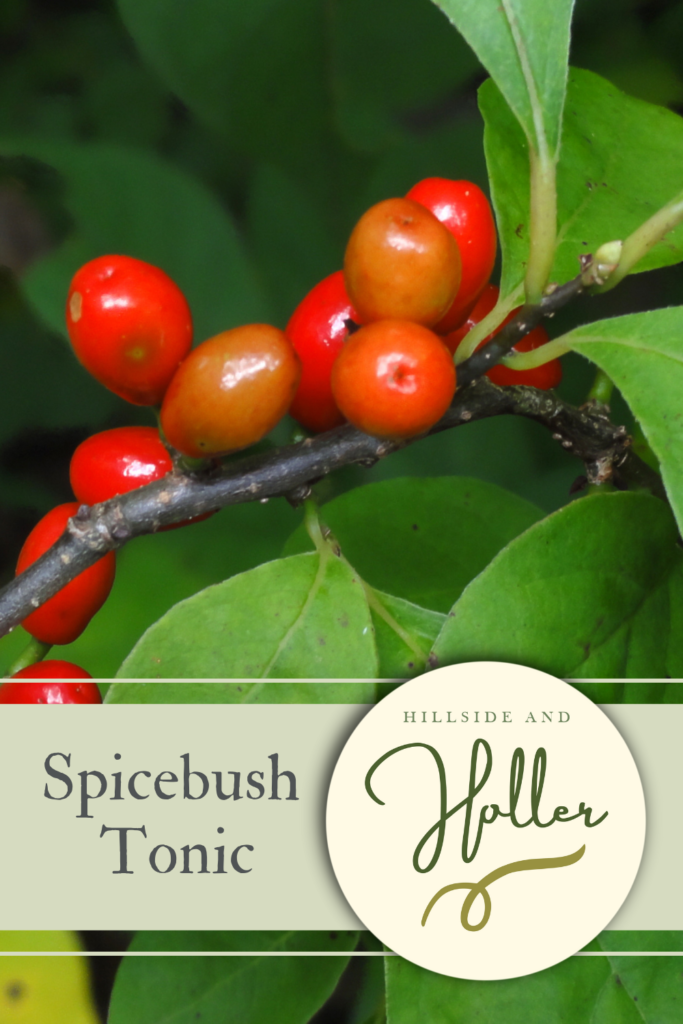Grandma Earlene didn’t talk about the past much. It was like she didn’t want to waste time looking back, she wanted to look forward. So when we walked out the dirt road, we’d talk about the trees that surrounded us, about me and my doin’s, and all about living a good life.

One time I asked Grandma what wild plants they gathered in her childhood. She quickly replied, “We didn’t gather any!” And then she paused a half beat and corrected herself. “Well, mama did send us out to gather wild tea.”
I was able to glean that the plant had a red berry before she changed the subject. That was enough to know it was spicebush, a plant native to the Eastern United States.
It’s early Spring as I write this, the very time of year that Great-Grandma would’ve sent young Earlene out to gather “wild tea”. It’s time for spring tonic, an age-old remedy for that end-of-winter sluggish feeling.

We now know that the body longed for vitamins and trace minerals at the end of winter because of the limited diet. But the Appalachians explained this as the blood thickening in the winter due to heavy diet and inactivity. Whatever the reason, folks need a pick-me-up. One very common spring tonic was a tea made from spicebush.
For further reading on spring tonics, I recommend this article taken from first hand accounts collected by the Coal River Folklife Project.
Spicebush is a native plant, an understory shrub, meaning it grows under the larger forest trees. It flowers very early in the spring before the leaf canopy blocks the sun. It likes moist soil so you’ll often find it near creeks.

Last fall I found a couple scraggly spicebushes on my hillside, trying to compete with the Japanese Honeysuckle. Just this week I freed them from the tangle, hoping they’ll take off this year. To find you some in early spring, look for speckled bark, forsythia like flowers, or the tiny green berries. The twigs, bark, berries, and crumpled leaves have a citrusy spicy smell.

To make your own spring tonic, gather a handful of new twigs…the buds, flowers, and green berries are a fine addition too. (All parts of the spicebush are edible.) Simmer – low boil in water for 30 min. Strain and sweeten to taste.
Happy Spring!
A Friendly Favor . . .
If you liked this story, would you spread the word? Pin this image or share using the icons below. This helps me share stories of Appalachia. I thank ye kindly.



Pingback: Wild Spring Greens | Hillside and Holler